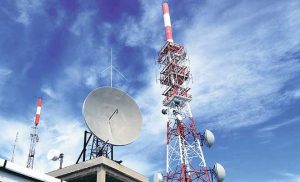India has emerged as a bright spot for global telecom gear vendors such as Ericsson, Nokia and Huawei at a time when most other markets are facing a downturn.

Total capital expenditure by mobile operators in the country is expected to increase 10-12 per cent annually over the next few years, according to consulting firm Analysys Mason. This is in contrast to the expected weakness in the overall global market, with demand for 4G mobile broadband equipment peaking in the previous financial year and upgrades to next-generation 5G equipment still years away.
Analysts expect the global telecom equipment market to regain the size of 119 billion (about $124 billion) it reached in the financial year to March 2016 only by 2021.
Global equipment vendors, which had been under pressure even in India in the July-September quarter due to slow spending on networks by telecom carriers, are now seeing their respective businesses coming back on track. This follows the successful spectrum auctions that helped carriers finalise their network strategies and led to roll-out of new 4G networks along with modernisation of existing 2G and 3G networks, backhaul and fibre across the country.
Colella said in the next few years, both the mobile and broadband ecosystem will remain healthy in the country. Nokia’s India head Sanjay Malik said India is currently in the early stages of 4G deployments, with a huge population which still needs to be connected.
Huawei’s Chandan Kumar, director, marketing and integrated solutions, said that with more spectrum having been made available, operators are focusing on quality of broadband services and HD voice as a product differentiator.
The industry expects growth in data, catalysed by the disruptive entry of Mukesh Ambani-led Reliance Jio Infocomm, availability of cheaper 3G/4G devices, content and user awareness to reach substantial levels in the future, leading to growth of networks driven by increased capital investment.
By Baishakhi Dutta





























